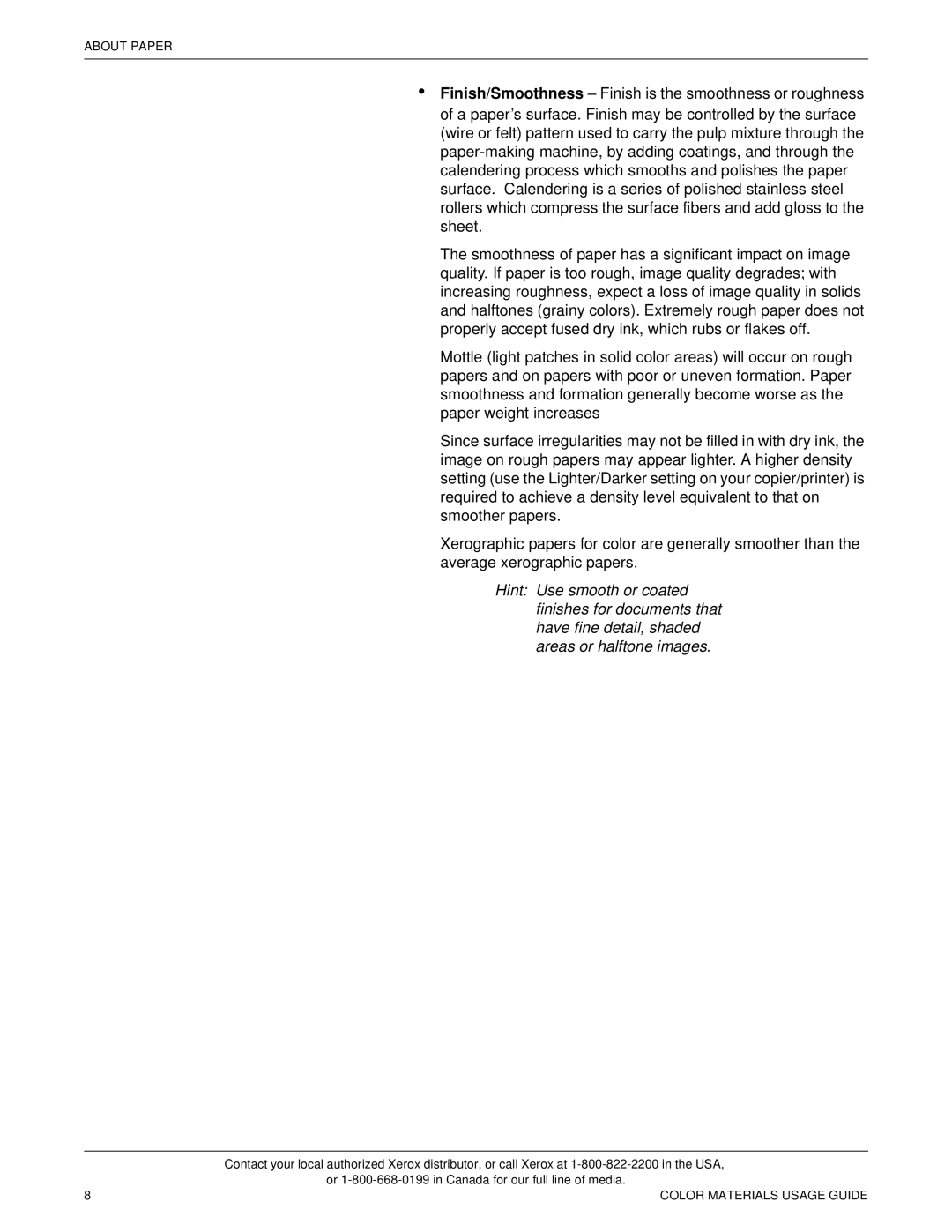
ABOUT PAPER
•Finish/Smoothness – Finish is the smoothness or roughness of a paper’s surface. Finish may be controlled by the surface (wire or felt) pattern used to carry the pulp mixture through the
The smoothness of paper has a significant impact on image quality. If paper is too rough, image quality degrades; with increasing roughness, expect a loss of image quality in solids and halftones (grainy colors). Extremely rough paper does not properly accept fused dry ink, which rubs or flakes off.
Mottle (light patches in solid color areas) will occur on rough papers and on papers with poor or uneven formation. Paper smoothness and formation generally become worse as the paper weight increases
Since surface irregularities may not be filled in with dry ink, the image on rough papers may appear lighter. A higher density setting (use the Lighter/Darker setting on your copier/printer) is required to achieve a density level equivalent to that on smoother papers.
Xerographic papers for color are generally smoother than the average xerographic papers.
Hint: Use smooth or coated finishes for documents that have fine detail, shaded areas or halftone images.
| Contact your local authorized Xerox distributor, or call Xerox at |
| or |
8 | COLOR MATERIALS USAGE GUIDE |
